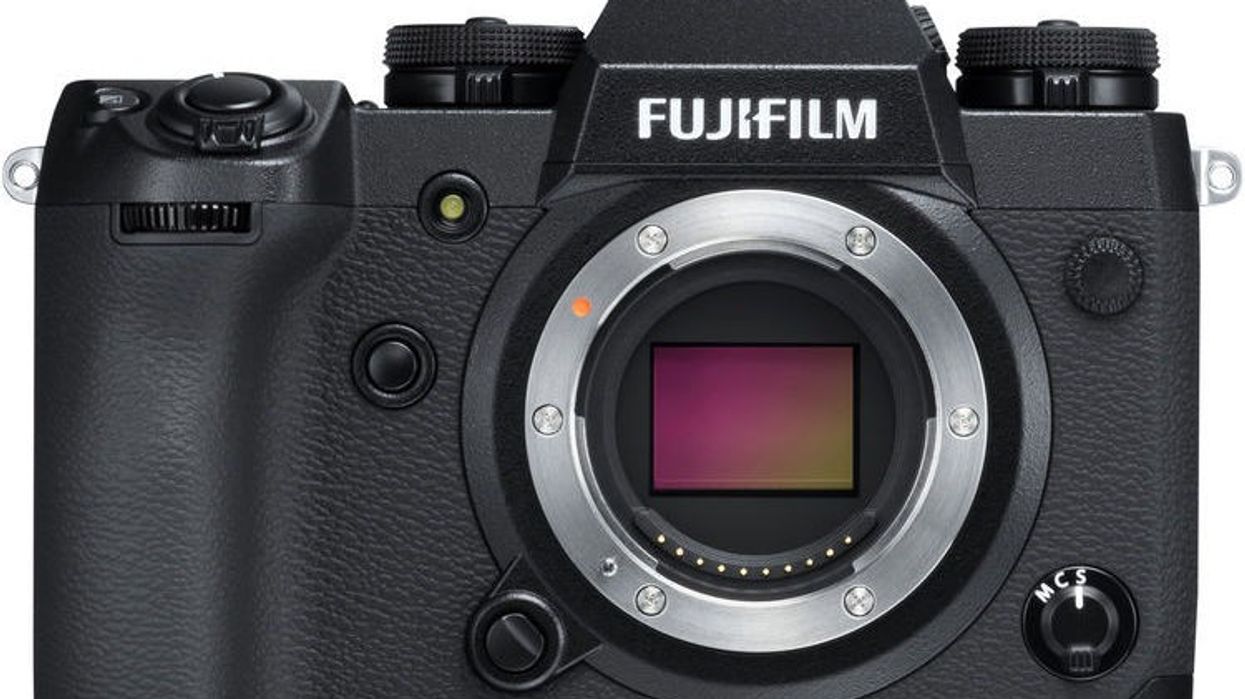Fujifilm Aims for Video Shooters with the X-H1 Mirrorless Camera and New Zooms
Fujifilm takes a cue from Panasonic and Sony in targeting filmmakers with the exciting new X-H1.

Mirrorless cameras have exploded in the last few years. While Canon and Nikon haven't fully embraced the format, Panasonic and Sony have dominated. After initially discovering that filmmakers loved these cameras, they have refined their offerings to create filmmaker-targeted models that create better video, are easier to use, and cost less. It's rare, lately, to see any professional work done on a $3000 video camera when you could instead be on a $3000 mirrorless, often out to a Pix or an Atomos.
While the Fujifilm XT2 has been beloved by still photographers, and as a stills unit by filmmakers (most of the reviews we do here at NFS are shot on it), Fujifilm hasn't come out with the "video specific" model until now. After leaking over the weekend, the official release is here: the Fujfilm X-H1. Along with it comes the release of X-mount versions of the popular MK zooms we reviewed, and loved, last year.
There are a few marquee features in the announced specs that are going to make the X-H1 very popular with filmmakers. First is the in-camera stabilization (often abbreviated IBIS for in-camera stabilization). The GH5S, a major competitor, actually removed IBIS from the GH5 in order to make other aspects possible, a decision questioned by Phillip Bloom, who rightly pointed out that many users will be hand holding these cameras and need the benefits of IBIS. Well, with the X-H1 you'll get it.

The other major improvement is the ability to record F-log to the internal SD cards, not just external recorders. F-log, like all log formats, allows the camera to map a wider dynamic range into the limited video dynamic range to be expanded after the fact during post-production. Log recording offers a host of benefits when you get to final finish and color grade, and the ability to use it internally without needing to go out to an Atomos is a huge plus. That, combined with the increase of data rate on 4K capture from 100mb/s to 200mb/s, and the maximum HD framerate of 150fps, will have many video shooting XT2 owners considering switching.

In addition, there have been other refinements to the overall package to make it better for video shooting. You now have the option of turning off the internal lowcut audio filter. The filter is designed to get rid of low rumbling noises, but can often remove the low tones from voices, and the option to turn it off when in a controlled audio setting where you don't need it will be appreciated by filmmakers. In another nod to sound, many controls previously only accessible via external buttons and knobs will now be accessible with the rear touch screen, allowing for silent changes in the middle of a take. That rear touch screen can also be used for touch autofocus, telling the system where to focus with a touch.

Along with the base unit, Fujifilm is launching a battery grip which will offer the placement of two additional batteries in the total camera package. This will not only allow for longer work times, but also for longer recording times (upping the 4K limit from 15 minutes to 30 minutes), and provide for an external headphone jack. While no official weight has been announced, we suspect that even the combo of the base camera and battery grip will come in less than or equal to the Canon 5D Mark IV.

In terms of limitations, it is still a 4:2:0, 8-bit system, while it will allow for 4:2:2 to an external recorder. This is the one area where it comes up short in comparison to the GH5S, with its class leading 10bit, 4:2:2 recording internally. But, of course, the GH5S comes at a $600 premium over the X-H1, and for many users, IBIS will be more important than 10bit. We secretly hope that this release also means that Fujifilm is thinking in a larger way about video and will be coming out with a C200/EVA1/FS-7 competitor soon, though that's only a dream at this point.
Available now from B&H for $1899.95.
Tech Specs
- 24.3MP APS-C X-Trans CMOS III Sensor
- X-Processor Pro Engine
- 5-Axis In-Body Image Stabilization
- Internal DCI 4K Video and F-Log Gamma
- 200mb/s video capture
- 0.75x 3.69m-Dot Electronic Viewfinder
- 3" 1.04m-Dot 3-Way Tilt LCD Touchscreen
- 325-Point Intelligent Hybrid AF System
- 1080p at 120 fps; Flicker Reduction Mode
- 1.28" Sub-LCD Top Screen
- Weather-Sealed Body; Two UHS-II SD Slots










![Ethos, Pathos, Logos: 20 Effective Ways to Advertise [Infographic]](https://nofilmschool.com/media-library/ethos-pathos-logos-20-effective-ways-to-advertise-infographic.jpg?id=34064614&width=600&height=600&quality=90&coordinates=560%2C0%2C0%2C0)

